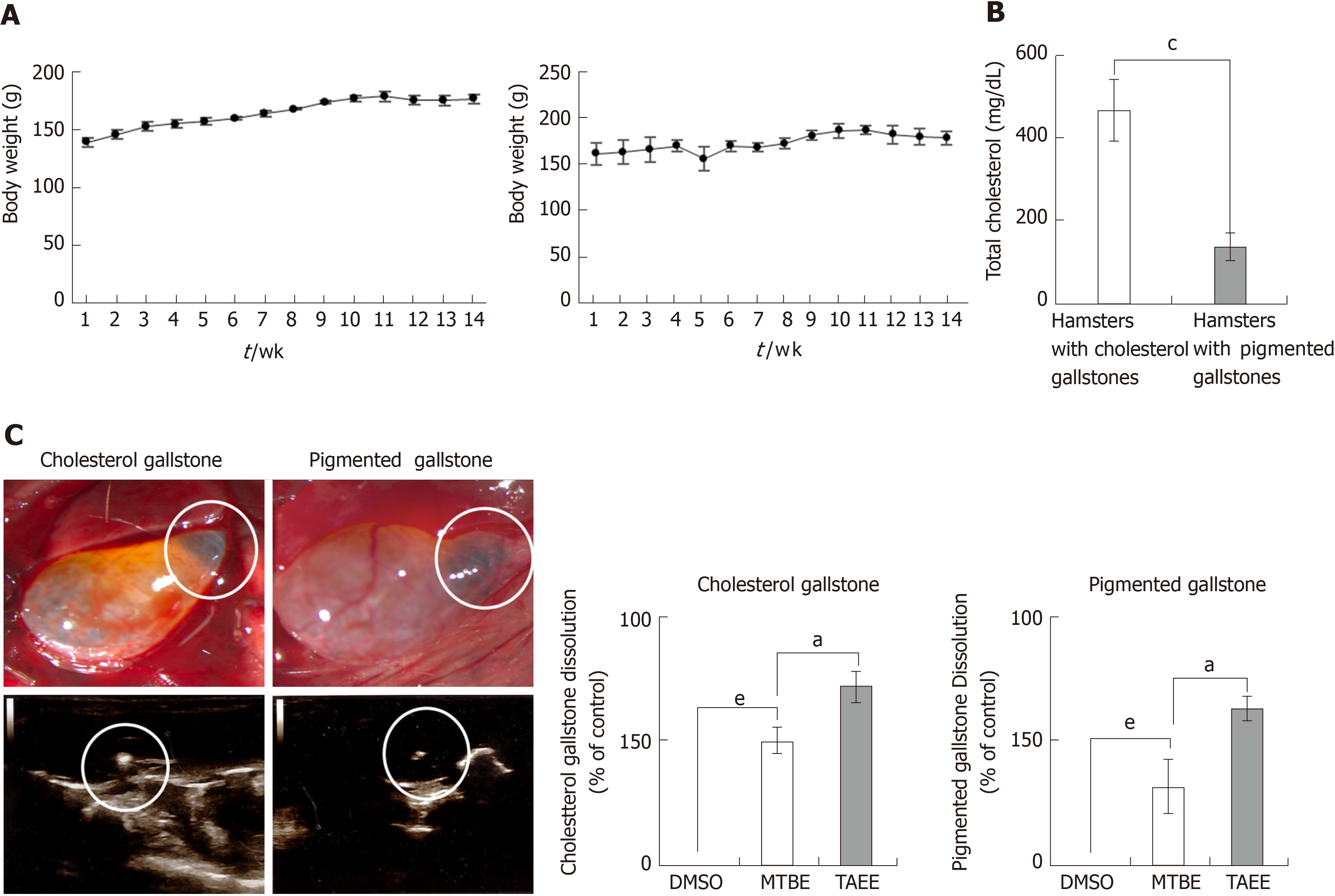Copyright
©The Author(s) 2019.
World J Gastroenterol. Oct 21, 2019; 25(39): 5936-5952
Published online Oct 21, 2019. doi: 10.3748/wjg.v25.i39.5936
Published online Oct 21, 2019. doi: 10.3748/wjg.v25.i39.5936
Figure 4 In vivo validation of gallstone dissolubility for each solvent.
A: Weight changes of hamsters in the cholesterol gallstones (Left) and pigmented gallstones (Right) groups. During the course of the feeding protocol, the hamsters in each group showed a consistent increase in body weight; B: Comparison of serum levels of total cholesterol in the hamsters with cholesterol gallstones and pigmented gallstones, respectively; C: Representative operative and ultrasound pictures demonstrating the development of cholesterol (Left) and pigmented (Right) gallstones in the experimental hamsters following their respective protocol diets. White circles indicate the gallstones within the gallbladder; D: Determination of in vivo gallstone dissolubility for each solvent. After infusing each solvent into the gallbladders of hamsters with gallstones for 24 h, the gallstone dissolubility was determined by comparing the weights of residual gallstones in treated hamsters with those in the control hamsters [treated with dimethyl sulfoxide (DMSO)]. Tert-amyl ethyl ether (TAEE) demonstrated a significantly higher dissolubility than methyl tert-butyl ether (MTBE) in both hamster models of cholesterol (Left) and pigmented (Right) gallstones. The dissolubility for each solvent (MTBE and TAEE) for the cholesterol gallstones was 61.0% and 76.75%, respectively (P < 0.05), and the dissolubility of each solvent for pigmented gallstones was 32.0% and 47.5%, respectively. aP < 0.05 comparing between MTBE and TAEE. cP < 0.05 between hamsters with cholesterol gallstones and those with pigmented gallstones. eP < 0.05 vs control (DMSO). DMSO: Dimethyl sulfoxide; MTBE: Methyl tert-butyl ether; TAEE: Tert-amyl ethyl ether.
- Citation: You DD, Cho SJ, Kim OH, Song JS, Hwang KS, Lee SC, Kim KH, Choi HJ, Hong HE, Seo H, Hong TH, Park JH, Lee TY, Ahn J, Jung JK, Jung KY, Kim SJ. Superior gallstone dissolubility and safety of tert-amyl ethyl ether over methyl-tertiary butyl ether. World J Gastroenterol 2019; 25(39): 5936-5952
- URL: https://www.wjgnet.com/1007-9327/full/v25/i39/5936.htm
- DOI: https://dx.doi.org/10.3748/wjg.v25.i39.5936









